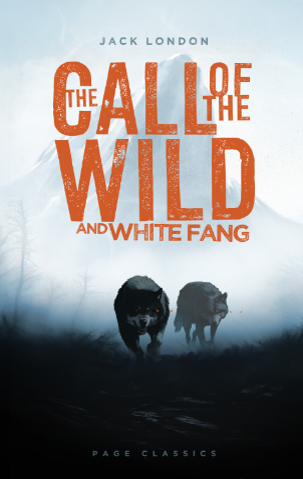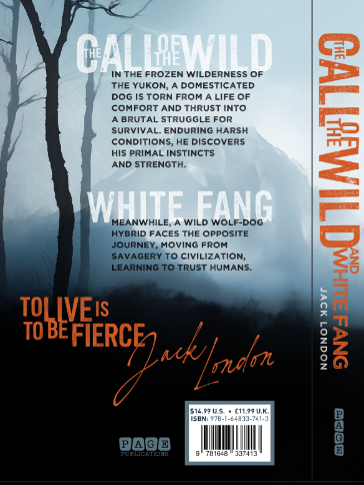The Call of the Wild (1903) and White Fang (1906) by Jack London are two of the most celebrated animal stories in modern literature. Both set during the harsh environment of the Klondike Gold Rush in Alaska, these novels explore themes of survival, nature, and the instinctual battle between civilization and the wild. Through the eyes of two remarkable animal protagonists—Buck in The Call of the Wild and White Fang in White Fang—London invites readers to delve deep into the primal world of animals, where they must navigate a brutal, unforgiving environment in order to thrive.
The Call of the Wild (1903)
In The Call of the Wild, we follow the journey of Buck, a dog stolen from a comfortable life on a Californian estate and thrust into the wilds of the Klondike during the Gold Rush. Buck's transition from a pampered pet to a fierce, survivalist animal forms the backbone of the narrative.
-
Plot: Buck, a St. Bernard-Scottish Collie mix, enjoys an idyllic life as a domestic pet on a wealthy estate. However, he is kidnapped and sold into the world of sled dogs, where he is forced to endure physical abuse and the brutal realities of life in the frozen wilderness. Over time, he sheds his domesticated nature, gradually evolving into a wolf-like creature who embraces the call of the wild. As Buck learns to fight for his survival and lead a team of sled dogs, he responds to a deep, ancestral pull that awakens within him—his primeval instincts. Eventually, he leads a wolf pack and answers the call of the wilderness, finding himself fully attuned to nature's brutal beauty and unrelenting demands.
-
Themes: One of the central themes in The Call of the Wild is de-civilization, the process by which Buck returns to his wild roots. The novel explores the primordial forces of nature that shape Buck's transformation, representing a struggle between the civilized world and the untamed wilderness. London's narrative emphasizes the importance of instinct, survival, and strength, as Buck triumphs over adversity in a harsh and unforgiving environment.
White Fang (1906)
In White Fang, the story focuses on a wolf-dog hybrid, also named White Fang, who is born in the wild and initially raised by his mother in the untamed wilderness of the Yukon Territory. Unlike Buck, who is taken from civilization into the wild, White Fang is a creature of the wild who must be domesticated through human interaction.
-
Plot: Born to a wild wolf and a domesticated dog, White Fang is raised in the wilderness where survival is a constant battle. His early life is shaped by cruelty and neglect, as he faces brutal encounters with humans and other animals. Over time, White Fang is exposed to the world of humans and becomes the property of Gray Beaver, an Indigenous man who treats him with respect. He is later sold to a brutal prospector, Beauty Smith, who forces him into dogfighting. However, White Fang is ultimately rescued by Weedon Scott, a kind-hearted man who helps him regain trust in humans. White Fang’s eventual domestication and transformation into a loving companion is a testament to the healing power of kindness and human companionship.
-
Themes: White Fang explores themes of violence, trust, and redemption. The novel contrasts the savage wilderness with the possibility of gentler, more nurturing relationships with humans. White Fang, like Buck, must wrestle with his primal instincts and the struggle for survival. Unlike Buck, however, White Fang’s story focuses more on the process of civilization and the redemptive potential of human care and affection.
5.1 x 7.87 (Inches)
352 Pages



